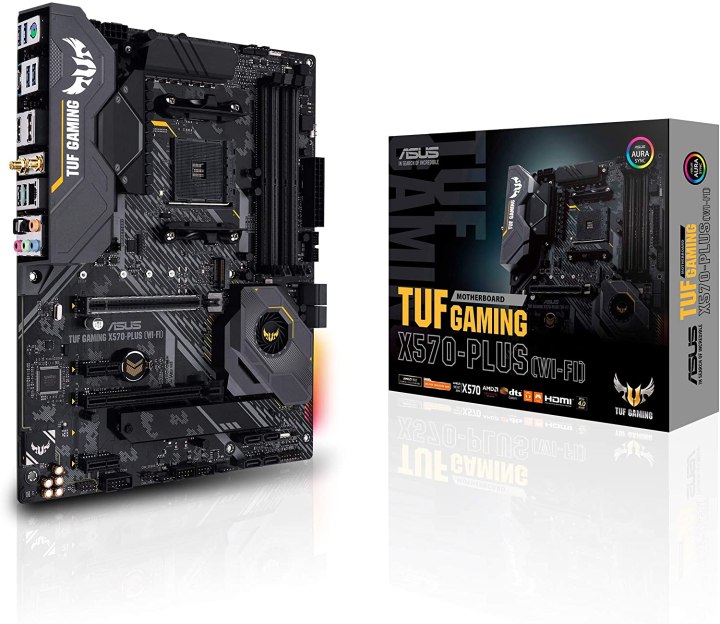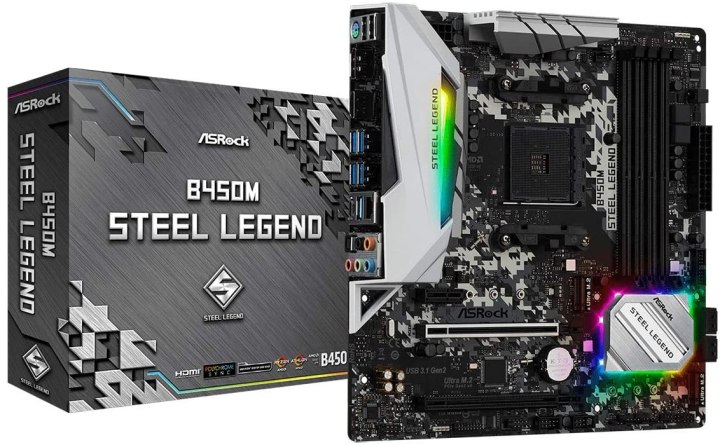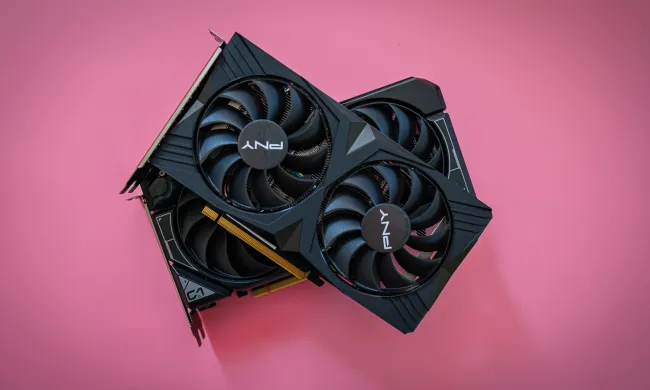You’ve selected the best processor for gaming and paired it with one of the best graphics cards for the highest performance. Now it’s time to choose a motherboard, which is a little more involved than it may seem. To help, we’ve rounded up the best motherboards for gaming, with options for every CPU and budget.
AMD and Intel have their own chipsets with differing features, so instead of comparing them, we selected options for both Intel and AMD CPUs. We included options from the last couple of generations from the two CPU brands, including new Intel Z690 motherboards for 12th-generation Alder Lake processors.
Intel Z690
Asus ROG Maximus Z690 Hero

The Asus ROG Maximus Z690 Hero is the ultimate Z690 motherboard. Its list price of $600 is tough to swallow, but like other Asus Maximus boards, it comes with all the trimmings to justify the cost. That includes a 20 + 1 VRM design for high overclocks, onboard Wi-Fi 6E and a 2.5 Gigabit Ethernet port, five M.2 SSD slots, and support for up to DDR5-6400 memory.
It’s the board for 12th-gen Alder Lake builds that don’t want compromise. In addition to the specs above, it comes with two Thunberbolt 4 ports, a USB-C port, and seven USB-A ports. An eighth USB-A port allows you to quickly flash a new BIOS version with a USB drive, and you can reset your BIOS or clear your CMOS using buttons on the back of the board.
The Maximus Z690 Hero has the looks to match its specs, too. That includes an ARGB header for fans and other components, as well as an RGB ROG logo that you can control through Asus Aura Sync. The board even ships with graphics card support bracket, so you can complete your build without any GPU sag.
MSI Pro Z690-A DDR4

If you’re looking for a cheaper option, the MSI Pro Z690-A DDR4 is a great alternative. It’s not technically a gaming motherboard, but it still supports high speed memory (up to DDR4-5200), and it comes with four M.2 slots for plenty of storage. It doesn’t include Thunderbolt 4, unfortunately, but still comes with a USB-C port on the back and a header on the board.
We’re recommend the DDR4 version because Intel 12th-gen Alder Lake processors support DDR4 and DDR5. MSI also offers a DDR5 version that’s $10 more, as well as versions for both that come with Wi-Fi 6 and Bluetooth 5.2 onboard.
Intel Z590
Gigabyte Z590 Aorus Tachyon

If you’re using an Intel 11th-gen chip with the LGA1200 socket, the Gigabyte Z590 Aorus Tachyon is a great motherboard for gaming. It’s expensive, but it features the best and brightest Z590 boards have to offer. That includes Wi-Fi 6E on board, a 2.5 Gigabit Ethernet port, dual CPU connectors, and a 12-phase direct VRM design with 100A DrMOS capacitors.
Overclocking is the focus of the Gigabyte Z590 Aorus Tachyon. It includes 14 physical buttons on the board that Gigabyte calls the “overclocking kit.” These switches allow you to power on and off the system, switch to an optimized LN2 mode, and even adjust your CPU’s clock ratio manually.
The board uses an extended ATX form factor to accommodate the switches, as well as the massive, Aorus-branded heatsinks that cover the board. If you’re looking for a Z590 board that doesn’t take any shortcuts, the Gigabyte Z590 Aorus Tachyon is for you.
Asus Prime Z590-P

The Gigabyte Z590 Aorus Tachyon is expensive, and it’s not the right motherboard for all builds. If you’re looking for something more sensible, the Asus Prime Z590-P is a much cheaper alternative. It still includes a 10 + 1 VRM design with DrMOS capacitors, as well as support for USB-C and even a Thunderbolt 4 header.
Although the Asus Prime Z590-P doesn’t have any RGB on board, it includes two ARGB headers for all of your accessories. It comes with some high-end features, too, including 2.5 Gigabit Ethernet and support for up to DDR4-5133 memory. The Asus Prime Z590-P may not look as good as the Gigabyte Z590 Aorus Tachyon, but it performs just as well for everyone except extreme overclockers.
Intel B560 and B460
MSI MPG B560I Gaming Edge Wi-Fi

The MSI MPG B560I Gaming Edge Wi-Fi is a tiny motherboard that packs a lot of power. It’s a mini ITX board, so it’s a great option for a small form factor gaming PC. Still, it comes packed with features, including 2.5 Gigabit Ethernet, a USB-C port and USB-C header, and support for up to DDR4-5200 memory.
Although all mini ITX board sacrifice in one way or another, the MSI MPG B560I Gaming Edge Wi-Fi is surprisingly light on compromises. MSI was able to squeeze two M.2 slots on the board, as well as four SATA 3 connectors. Keep in mind that this board uses the B560 chipset for Intel 10th-gen and 11th-gen processors, so it doesn’t support overclocking.
ASRock B460 Steel Legend

Intel’s 10th-gen CPUs are still a great option in 2021, and you can generally save on a high-end, previous-gen motherboard. The ASRock B460 Steel Legend is a perfect example, sporting a nine-phase power design with DrMOS capacitors, 2.5 Gigabit Ethernet, and a total of seven USB ports (one of which is USB-C).
You can further expand your connectivity with the two USB 3.2 Gen1 headers onboard, which are situated on the long edge of the board next to a soft RGB underflow. If you want a high-end motherboard but don’t want to bother with overclocking, the ASRock B460 Steel Legend is a great option.
AMD X570
Asus Tuf Gaming X570-Plus (Wi-Fi)

The Asus Tuf Gaming X570-Plus (Wi-Fi) is all you need for gaming — plus a little more. It’s not too expensive, but it still comes packed with 14 power stages for overclockers, PCIe 4.0 support, and a slew of protection options that come standard on Asus Tuf motherboards. Those include LAN surge protection, overvoltage protection, and stainless steel back I/O.
Coming from Asus’ Tuf line, the Tuf Gaming x570 is built for durability and reliability, and reviews show that the board is, indeed, both durable and reliable. The board supports Ryzen 2000-, 3000-, and 5000-series processors, though you may need to update your BIOS for the older processors (you can request a bootkit from AMD).
Gigabyte X570 Aorus Extreme

Coming in at an exceedingly higher price, the Gigabyte X570 Aorus Extreme board has plenty to offer AMD users who are all in with AMD’s Ryzen 5000 CPUs. It is a very capable gaming board with plenty of storage options and more USB ports than almost anyone could need. It supports high-speed memory, too, and has an excellent audio chip. It also features native support for Wi-Fi 6 and 10 Gigabit Ethernet for lightning-speed networking capabilities.
This is an X570 motherboard that remains cool no matter what, so much so that its chipset doesn’t even require a fan like most other high-end X570 boards. Its VRM has loads of conductive metal on the surface, keeping the 16-phase setup cool for advanced overclocking and incredible system stability.
These boards also feature total support for many different graphics cards for both Nvidia RTX and AMD RX GPU users. Their PCIe slots are “armored,” signifying that they are strengthened to counteract drooping with high-end and heavy graphics cards.
AMD B550 and B450
ASRock B550 Taichi

Unlike Intel, AMD supports overclocking on its B-series chipsets, so you can spend a little extra on your motherboard without feeling like you’re wasting money. We went big for this pick with the ASRock B550 Taichi. It’s a beautiful motherboard brandished with copper and RGB accents, and it can go toe to toe with motherboards that cost twice as much.
That starts with a 16-phase VRM design with DrMOS capacitors, as well as memory overclocking up to DDR4-5200. For specs, you have access to two M.2 ports and eight SATA 3 ports, 2.5 Gigabit Ethernet, Wi-Fi 6 support, and eight USB ports on board (including a USB-C port).
Like any high-end option, the B550 Taichi comes with shielding around all parts of the board, as well as a steel backplate. It’s a high-end option without the price, saving big with the lesser B550 chipset without sacrificing the features that make expensive motherboards tick.
Gigabyte B550M DS3H

The Gigabyte B550M DS3H is an inexpensive motherboard that still covers the essentials. The B550 chipset has nearly all the features of the higher-end X570 chipset, including support for overclocking. Despite stepping down, the Gigabyte board we selected still supports PCIe 4.0, though it can only handle PCIe 4.0 on a single slot.
Despite the small form factor, this Gigabyte motherboard is still packed with connectivity options, including a full four RAM slots that can take up to 128GB at 4,600MHz (with XMP enabled). The 5 + 3 phase VRM design is a step down from motherboards around $200, though it should still provide clean, stable power for moderate overclocks.
It’s worth pointing out that the B550 chipset only supports Ryzen 3000- and 5000-series processors, unlike X570, which supports 2000-series processors as well. The smaller size means you’re limited on expansion slots, too.
ASRock B450M Steel Legend

For around $90, it’s hard to beat the ASRock B450M Steel Legend. It supports Ryzen 2000 up to Ryzen 5000 processors, and it comes dressed with controllable RGB lighting around the board along with an ARGB header. It isn’t great for extreme overclocking, and it comes in the Micro ATX form factor, but the few drawbacks of the B450M Steel Legend are easy to overlook considering the price.
Despite being a budget option, the B450M Steel Legend still comes with eight USB ports (two USB 2, five USB 3.1, and one USB 3.1 Type-C), as well as two M.2 slots. The older B450 chipset locks these M.2 slots at PCIe 3.0 speeds, though the board still supports AMD’s most recent Ryzen 5000 CPUs.
FAQ and buying guide
- What are the benefits of a nicer motherboard?
- Will any motherboard fit in any case?
- What are the benefits of a nicer motherboard?
- Which motherboard is best for an Intel i9 processor?
Which motherboard is best for gaming?
A nicer motherboard won’t give you a performance boost, but you’ll benefit from extra features. More expensive motherboards usually come with more USB ports and may include wireless technologies onboard like Wi-Fi and Bluetooth. Nicer motherboards come with more storage options, too.
The biggest benefit is VRM design, though. The VRM regulates power to your processor, and more expensive motherboards usually have more VRM phases. That’s an indicator that the board can handle increased power to the CPU, making nicer motherboards ideal for overclocking. As is the case with all PC components, though, individual reviews are a must.
Will any motherboard fit in any case?
No. You will need to make sure that your motherboard can fit inside the case you want. There are three main motherboard standards: ATX (full size), Micro ATX (mATX), and Mini ITX (often just ITX). Before buying a motherboard, make sure your case supports the size. Most cases that support ATX motherboards support Micro ATX and Mini ITX boards, too.
Although uncommon, you may find an Extended ATX motherboard (eATX). These boards are wider than standard ATX ones, and they won’t fit in a good chunk of ATX cases. Make sure to double-check compatibility before picking up any parts.
Which motherboard is best for an Intel i9 processor?
The best motherboard for an Intel i9 processor depends on the processor’s generation (noted by the first number after the i9 tag). The most recent processor is the 11th-gen Core i9-11900K, which uses the LGA1200 socket. The absolute best LGA1200 motherboard right now is the Asus ROG Maximus XIII Hero, but it’s almost $500.
If you want a more reasonable option, check out the MSI Z590-A Pro. It comes with a solid list of features and the latest flagship chipset from Intel. It supports overclocking, too, though you may not be able to push as much power through the board as you can on the Maximus XIII Hero.
Which motherboard is best for gaming?
There isn’t a best motherboard for gaming. It depends on the processor you’re using. For Intel, make sure to pick up a board with the Z590 or newer chipset. The cheaper B-series chipset doesn’t support overclocking, which is important if you want to game. AMD supports overclocking on its B550 and X570 chipsets, so either works.
Outside of the chipset, double-check that your processor fits in the socket on the motherboard. Intel’s latest socket is LGA1200 and AMD’s is AM4. For most people using the latest processors from AMD and Intel, we recommend the MSI Z590-A Pro for Intel and Asus TUF Gaming X570-Plus (Wi-Fi) for AMD.




